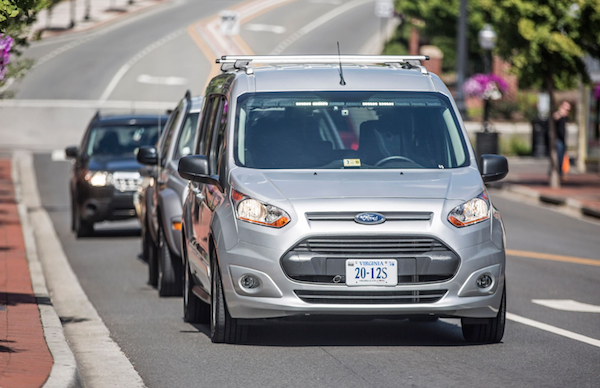Ford Implements Their Autonomous Vehicle Research In Virginia
Throughout August, Ford and the Virginia Tech Transportation Institute (VTTI) partnered to conduct autonomous vehicle research on the road to address an important issue: how self-driving vehicles will communicate with pedestrians, cyclists, and other (human) drivers.
Researchers simulated an autonomous vehicle with a “seat suit” concealing the driver in order to evaluate real-world encounters and behaviors between the van and other road users. Cars were further outfitted with a light bar on the top of the front windshield – where a pedestrian might look to a driver to determine if it’s okay to cross the street – to study how light signals can communicate if the vehicle is yielding. During the entire research process, more than 150 hours of data over 1,800 miles of driving was collected in an urban environment.
Through this partnership, Ford is also working on establishing an industry standard for light signals on autonomous vehicles to create a standard visual language everyone can easily process and understand.
Related Posts
| Print article | This entry was posted by Art Eddy III on September 14, 2017 at 12:02 pm, and is filed under Cars. Follow any responses to this post through RSS 2.0. Both comments and pings are currently closed. |
Comments are closed.




















